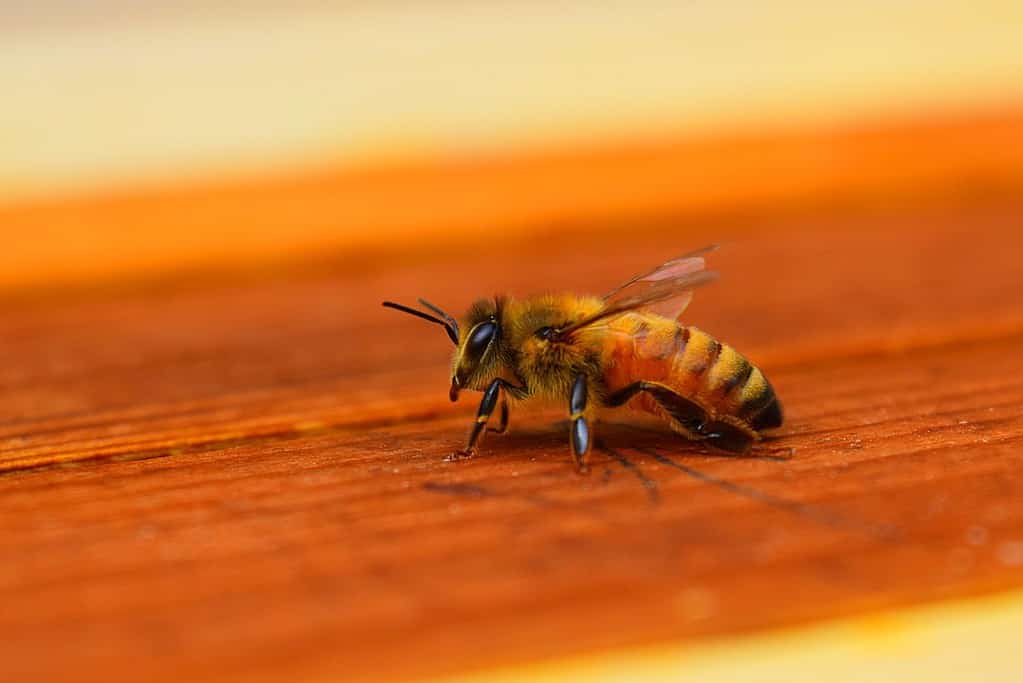The motivations behind altruistic behavior in humans can differ from those in animals. However, this doesn’t imply animals can’t be altruistic. In evolutionary biology, an animal’s behavior is considered altruistic when it benefits other individuals, even to the altruist’s own detriment. Species with complex social structures, like bees, are a great example.

Researchers at the Pennsylvania State University looked at the genetics behind retinue behavior (feeding and grooming the queen) in worker honeybees, who are always female. After being exposed to the queen’s mandibular pheromone, worker bees will have inactive ovaries. These bees then help to spread the pheromone and tend to the queen and its new eggs.
This behavior is altruistic, the researchers argue in their study in the journal Molecular Ecology, as it benefits the ability of the bee to produce offspring, while the working bee remains sterile. Honeybees live in colonies and the queen is typically the mother of everyone in the hive. Worker honeybees forage for food and protect the hive.
In their study, the researchers also found that the genes that make worker bees more receptive to this pheromone, and more likely to display the retinue behavior, can be passed down from either the mother or the father bee. However, the genes only lead to altruistic behavior when they are passed down from the mother.
“People often think about different phenotypes being the result of differences in gene sequences or the environment. But what this study shows is it’s not just differences in the gene itself — it’s which parent the gene is inherited from,” Sean Bresnahan, corresponding author and doctoral candidate at Penn State, said in a news release.
Christina Grozinger, study co-author, said the findings also support the Kinship Theory of Intragenomic Conflict, which suggests genes from mothers and fathers are in conflict regarding which behavior to support. The study, she said, is the first one to show that genes from females pass altruistic behavior onto their offspring.
“This study reveals a very subtle and unexpected form of genetic control of those behaviors. With our system, we see that genes from the mother — the queen — are supporting altruistic behavior in her offspring, which leads to more copies of her genes in the population,” Grozinger, also a researcher at Penn State, said in a news release
Altruistic honey bees
In their study, the researchers crossbred six different lineages of honeybees — something that’s relatively easy in mammals or plants but much harder in insects, Bresnahan said. After they were crossed and the offspring were old enough, the team looked at worker bees’ reaction to the pheromone that triggers the retinue behavior.
They used RNA sequencing to look at the genome-wide expression in the workers and sequenced the genomes of the parents of those crosses. This allowed them to develop personalized genomes of the parents and then trace the workers’ gene expression to each parent to find out which parent’s copy of that gene was being expressed.
Seeking to visualize this conflict within the genome, the researchers at Penn State used different techniques, such as machine learning, to examine gene regulatory networks or groups of genes regulated by similar transcription factors (the proteins that can turn genes on and off) to produce similar expression patterns.
They looked at relationships between genes and transcription factors expressed from the mom’s copy and from the dad’s copy to identify where one might try to counteract the effects of the other. Ultimately, the researchers identified gene regulatory networks with intragenomic conflict, finding that more genes were expressed with paternal bias.
“The fact that this is the third behavior where we have found evidence that intragenomic conflict contributes to variation in honey bees suggests that intragenomic conflict might shape many types of traits in bees and other species. Hopefully, our research will provide a framework and inspiration for others,” Grozinger said.
The study was published in the journal Molecular Ecology.






